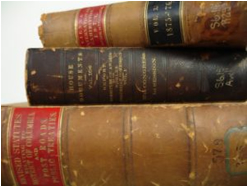
Effective March 18, 2013, the new Family Law Act of British Columbia took effect, replacing the prior Family Relations Act. The Family Law Act makes some changes to the pension divison options that were avaible under the Family Relations Act.
The Family Law Act provides several different mechanisms for dividing a member’s defined benefit pension on marriage breakdown. There are several different possibilities for defined benefit pensions:
- If the pension is currently in pay (referred to as a “matured” pension), then the non-member spouse will receive their share of the member’s pension directly from the pension plan. It is important to note that this pension will end when the member dies (subject to any guarantee or survivor benefits); the non-member’s share of the pension is not converted into a separate pension.
- If the pension is not in pay (referred to as an “unmatured” pension), then the non-member spouse can elect to become a limited member of the pension plan; the non-member does not have to become a limited member of the plan and instead the member spouse can buy them out of their portion of the pension (see the following bullet for more information). Once the member becomes eligible to have their pension commence (i.e. often age 55), the limited member (i.e. the non-member spouse) can receive their pension in one of two ways: they can receive a lump sum transfer from the pensionn plan to a locked-in RRSP or they can recieve an immediate pension which is actuarially adjusted and payable for their lifetime. The limited member must commence their pension or take a lump sum transfer once the member’s pension commences. Be aware that the lump sum payable to the limited member and the actuarially adjusted pension payable to the member are both calculated assuming that the pension commences at the average retirement age for the pension plan. Depending on the age of the member at the time of calculation and the average retirement age for the pension plan, the limited member’s pension may be significantly less than pension payable to the member.
- In the case of either a matured pension or a unmatured pension, the couple can choose not to use the above division mechanisms and the member spouse can keep their entire pension by buying out the other spouse with an appropriate compensation payment (which would involve either a cash payment or the trading of other assets). This compensation payment is based on the value of the pension as specified under the regulations to the Family Law Act of British Columbia and needs to be determined by an independent actuary as the pension plan administrator will not provide this value. This value needs to include reasonable allowances for future increases in the pension and will generally be higher than the commuted value of a member’s pension (click here for more information).
For defined contribution pension plans, 50% of the contributions made between the date of marriage and the date of entitlement and interest on those contributions can be transferred out of the pension plan to the non-member spouse.
Under the prior Family Relations Act, the primary diffierence was with respect to the division of a pension that was not in pay. In this situation, the non-member spouse could have elected to become a limited member of the pension plan; the non-member did not have to become a limited member of the plan. The limited member (i.e. the non-member spouse) could receive their pension in one of two ways: they could receive their portion of the pension when the member spouse began receiving a pension (it was actuarially adjusted and continue for their life based on the member’s actual age at retirement, not the average retirement age for the pension plan) or they could receive a lump sum transfer from the plan to a locked-in RRSP when the member spouse became eligible for retirement.
Note that federally regulated pension plans (i.e. banks, airlines, rail) may not offer the above pension division options and may only allow the division options available under the federal Pension Benefits Standards Act. Under the federal Pension Benefits Standards Act, up to 100% of the benefits earned during the relationship can be assigned to the spouse. If a portion of the member’s pension benefits are assigned to the spouse, the non-member spouse is deemed to have been a member of the pension plan and have terminated their membership in the plan. Most federal pension plans have established administrative policies as to how the non-member spouse can receive their share of the pension, however, typically they will have the choice of an immediate lump sum transfer or a deferred pension in the plan if the member is not retired and they will receive a pension from the plan if the member is retired (the plan may offer a lump sum option and they may convert the spouse’s pension to one payable for their lifetime). For more information, click here.
Federal government pensions are divided in accordance with Pension Benefits Division Act which only allows an immediate lump sum transfer from the pension plan to the non-member spouse. For more information, click here.
